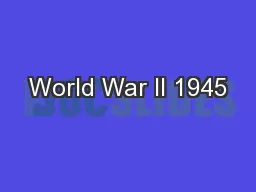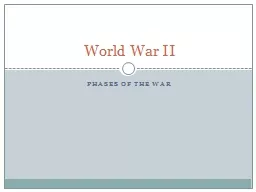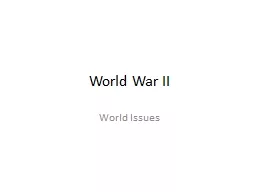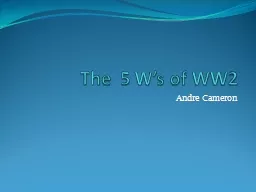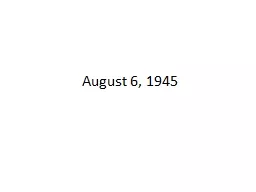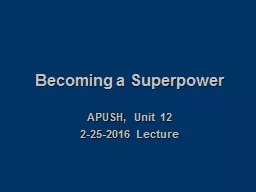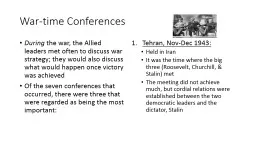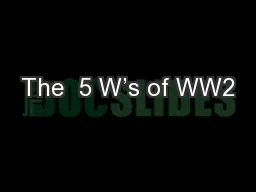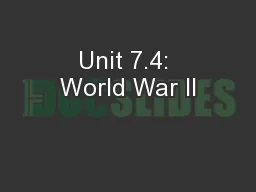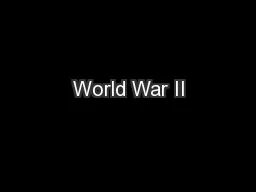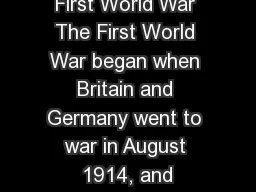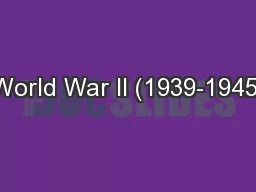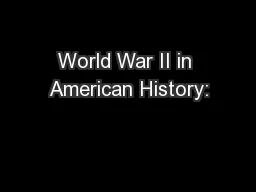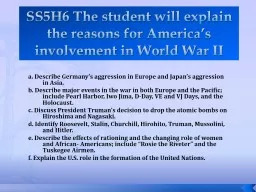PPT-World War II 1945
Author : stefany-barnette | Published Date : 2017-12-20
January Jan 117 The German soldiers pull out of the Ardennes Jan 17 The Soviet A rmy captures Warsaw Poland Jan 26 The Soviet Army liberates the Nazi concentration
Presentation Embed Code
Download Presentation
Download Presentation The PPT/PDF document "World War II 1945" is the property of its rightful owner. Permission is granted to download and print the materials on this website for personal, non-commercial use only, and to display it on your personal computer provided you do not modify the materials and that you retain all copyright notices contained in the materials. By downloading content from our website, you accept the terms of this agreement.
World War II 1945: Transcript
Download Rules Of Document
"World War II 1945"The content belongs to its owner. You may download and print it for personal use, without modification, and keep all copyright notices. By downloading, you agree to these terms.
Related Documents

